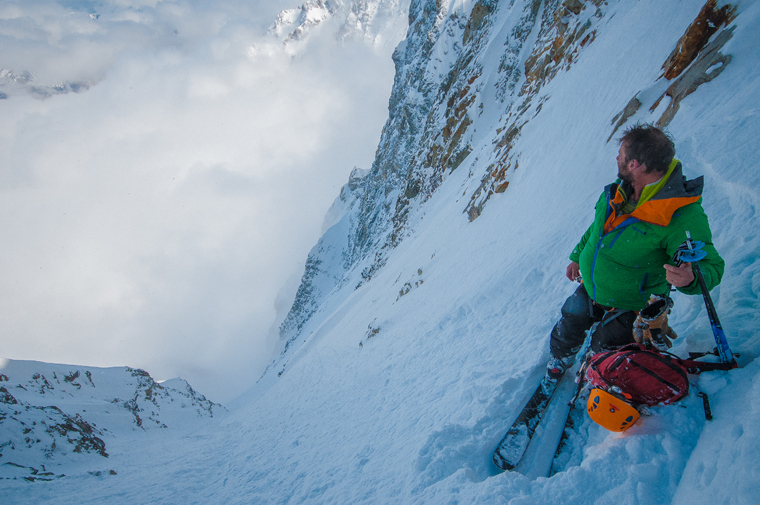Five tips that make skiing steeps (a little bit) easier


The pedal turn (or ‘hop’ turn) is an essential skill for every steep skier and most useful in steep and narrow couloirs. Try practicing it in unexposed terrain first.
The pedal turn saves energy and shuts down momentum at the end of the turn, instead of accelerating you out of it. It takes finesse and practice to get right. For step-by-step tips, check out this, written by my mentor, and legendary guide, Bela Vadasz.
A kick turn is another vital technique (so long as you’ve perfected it somewhere safe first!); you may well find yourself facing the wrong way over exposed terrain, where side stepping uphill is not easy or taking your skis off is not possible. Dial in your ability to turn 180° before your life depends on it.
The turn is the easy part! It’s the upper body and poles that make a good skier, great. And one of those greats, Doug Coombs, refined the folding pole plant to an art form. It keeps your hands where you can see them at all times, without turning your head: essential when skiing steeps.
Extend your downhill pole, reaching for the slope above your next turn. Once planted, fold it towards the fall-line (drive it almost flat into the slope as you pivot around it) so that it becomes your new uphill pole after the turn. Try to avoid dragging your new uphill folded hand on the snow.
Combine this technique with the pedal hop turn and you’ll be hopping down that 45° slope in no time. Watch ‘Jedi master’ Coombs below to see it done right!
Don’t let your pack weight throw you around or get below you in the fall-line. Incorrect fit (make sure your pack is the right size for your torso) and bad packing will cause unnecessary momentum resulting in over-correction.
Pack heavier items in the bottom near the waist belt to keep the load on your hips. Lighter and puffier stuff fills the middle space to balance things out. Make sure emergency rescue gear is always accessible. At transitions think about what you might need in the coming terrain and bring those items to the top.
Most importantly, tighten the waist, chest and shoulder straps so that the pack is pulled against your back and stays centred, moving with you, not against you.
These are the steep skier’s get out of jail free cards. Always check the snow under your skis on steep slopes before committing. By simply un-weighting and re-weighting each ski followed by a sidestep down the slope, you can get a quick snow assessment.
Baton Ramasse is a technique to help you get over rocky or icy sections while sidestepping – before it’s serious enough to need an ice axe. Hold both poles together, the uphill hand a third of the way down the pole, and the downhill hand on the grip. They are parallel to the fall-line, perpendicular to gravity and horizontal to your body with the tips of the poles in the slope behind you. This provides stability and balance as you sidestep down the hill. Take two steps then reset the poles from your new stance. Stay centred over your skis. Don’t lean back on your poles or you’re gone.
Respect for others and the environment of a steep couloir is essential. The very nature of it means there isn’t a lot of room for manoeuvring and conditions change rapidly. Never stop in the middle of a couloir; pull out to a safe zone to take a breather with your back to the wall so you can see what or who is going down. Don’t ski above someone – especially if they don’t know you’re there, this is dangerous and rude. They got up earlier so let them ski it out without being ‘sluffed’ by you. Try to sidestep a section you can’t ski rather than sideslip it. Sideslipping scrapes the snow from a section that others might happily ski or jump. Scraped out icy tight spots tend to get worse throughout the season. FL